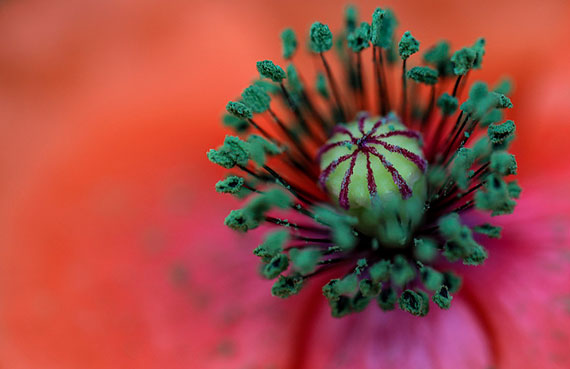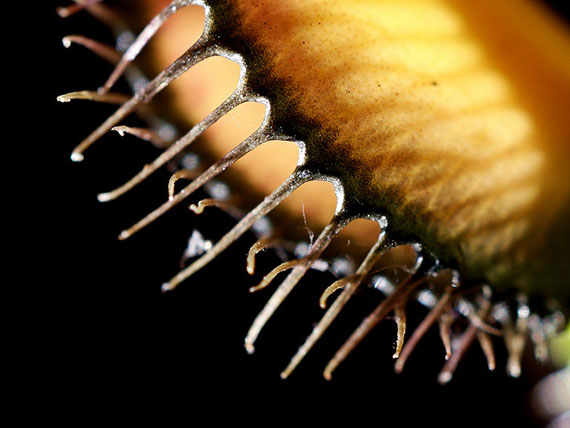If there’s one thing I like about macro and close-up photography, it’s that no matter where you are right this moment, there is a fascinating subject waiting to be shot. Not many other kinds of photography can make that claim. Photographers who enjoy shooting portraits are dependent on a model to shoot. Landscape photographers exist in a seasonal world of changeable weather. A sports photographer has to go to where the sports are played, and they too are limited by season.

Photo by Budiman Salleh
No matter the season or the time of day I’d wager that a suitable close-up subject can be found within five or six feet of the chair you currently sit in. Photographers who pursue macro photography can find endless inspiration in the details and patterns that surround us. In exchange, their photos reveal a tiny world that normally falls below our perception.
When it comes to exploring macro and close-up photography, the good news is that anyone can participate. While a DSLR camera is preferred for close-up work, using a compact camera can be just as rewarding.
What is “Macro”?
So far we’ve used the words ‘macro’ and ‘close-up’ in this article. We also need to add ‘close-focus’ to our list of terms. These three terms often get used interchangeably, and that’s not entirely correct. Without getting too technical, here are basic definitions of the three terms:
- Close-up is a photo term that describes filling the frame with the subject. A close-up isolates the subject from its environment. Any lens or any camera is capable of taking a close-up.
- Macro defines how large a subject is captured in the camera. Macro is expressed as a ratio like 1:1, 1:2, or 1:4, and it’s really pretty easy to keep it all straight. A 1:1 macro image is telling us that the image on the film or camera’s sensor is the same size as the subject in real life. If I take a 1:1 macro image of a dime using film and develop the film into a negative we would see that the image on the negative is exactly the same size as the dime in real life. If my lens maxes out at 1:2 macro the image will be ½ life size and so on. True macro lenses capture images at 1:1 ratio (some include 1:2 ratio too).
- Close-focus describes any lens where the maximum size of the captured image is smaller than the real life subject. Here we are talking about ratios of 1:2 or less (e.g., 1:3, 1:4, etc.). Most zoom lenses are actually not macro lenses but close-focus lenses.
We’ll go over some of the more technical aspects in more depth in a future installment. For this article, we will use the term ‘Macro’ in talking about this subject. Purists will just need to bear with us for now.

Photo by Jean-Marc Linder; ISO 100, f/4.5, 1/80-second exposure.
Some Tools of the Trade
Macro photography is so popular that most cameras have an exposure mode built-in to support it. If your camera has selectable modes you’ll find macro by selecting the icon shaped like a tulip. Selecting this mode on a compact camera can cause the camera’s lens to lock at the optimum length for close work. On a DSLR, the macro mode only changes exposure meter settings and focus zones; selecting the mode won’t do anything to the mounted lens.
The most common DSLR lenses used by hobby photographers for macro photography is a tele-zoom: a lens in the 55-200mm or 70-300mm range. These tele-zooms tend to have a macro ratio of 1:3 or 1:4.
If the photographer doesn’t have a tele-zoom, a basic 18–55mm kit lens or 50mm f/1.8 lens equipped with inexpensive close-up filters will do the trick.
There are true macro lenses available for every DSLR lens mount. These are the lenses that offer a 1:1 or 1:2 image ratio.
We’ll talk in depth about the equipment and accessory options that can take macro photography from enjoyable curiosity to passionate pastime in future installments. For now we have three assignments designed to get us thinking in terms of small, tiny, and details.
Next article: Inexpensive Macro Accessories
Macro Photography Assignments
For these assignments use your camera in the Macro mode setting. If you’re shooting a DSLR and have a tele-zoom lens, you might wish to have it mounted to the camera.
For each assignment, take 10 images over about 15 minutes’ time; make sure to use all of the time and take no more than ten images. Set your lens length for maximum magnification and do not change the setting. Learn to move yourself and the camera toward or away from the subject in order to create your composition or achieve focus.
Assignment number one is an old favorite. If you have an old hula-hoop you’re set, otherwise fashion a ring about 30 inches across out of old garden hose, cardboard, or another semi-rigid material. Take your ring to a garden spot and give it a toss. Wherever the ring lands is where you take your macro pictures. You may only photograph objects within the ring. Our goal with this exercise is to learn to see small subjects and isolate them into images. (Tip: don’t toss your ring onto empty open lawn! It’s OK to aim.)
Assignment two is fairly basic. Find a toy or model no larger than an inch or two and place it in the middle of a white sheet of paper. Have the paper and your object set up close enough to a window for illumination. Moving your subject as little as possible, take your shots as described above. Our goal is to get a feeling for how the subject changes as we move our camera and change our viewpoint.

Photo by Katherine Martinelli; ISO 400, f/6.3, 1/80-second exposure.
The third assignment is about discovery. Walk into any brightly lit room and find ten macro shots to take. Do not move or touch any object that you photograph. Your flash will probably not do you any good; the bright room is necessary. Take macro shots of ten different objects. (Tip: for this exercise I like to use my kitchen).
About the Author:
Stu Eddins is blogger, instructor, merchandiser, and is generally in charge of a lot of things for Porter’s Digital Cameras and Imaging. Years of experience over the counter and in classrooms have turned Stu into an evangelist for image preservation, capturing and sharing memories, and helping people understand digital cameras, digital camera lenses.
Go to full article: Close-Up and Macro Photography Tips
What are your thoughts on this article? Join the discussion on Facebook
PictureCorrect subscribers can also learn more today with our #1 bestseller: The Photography Tutorial eBook
The post Close-Up and Macro Photography Tips appeared first on PictureCorrect.
from PictureCorrect https://ift.tt/2KPkSZc
via IFTTT






0 kommenttia:
Lähetä kommentti